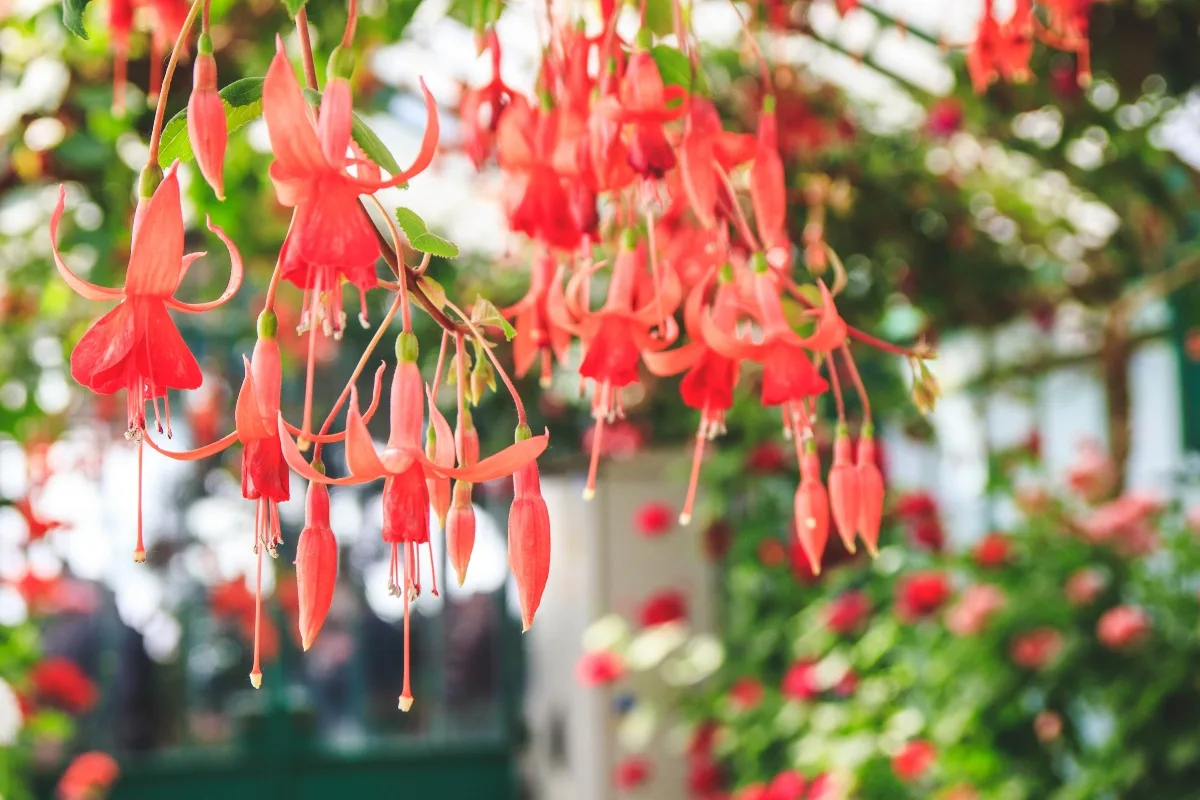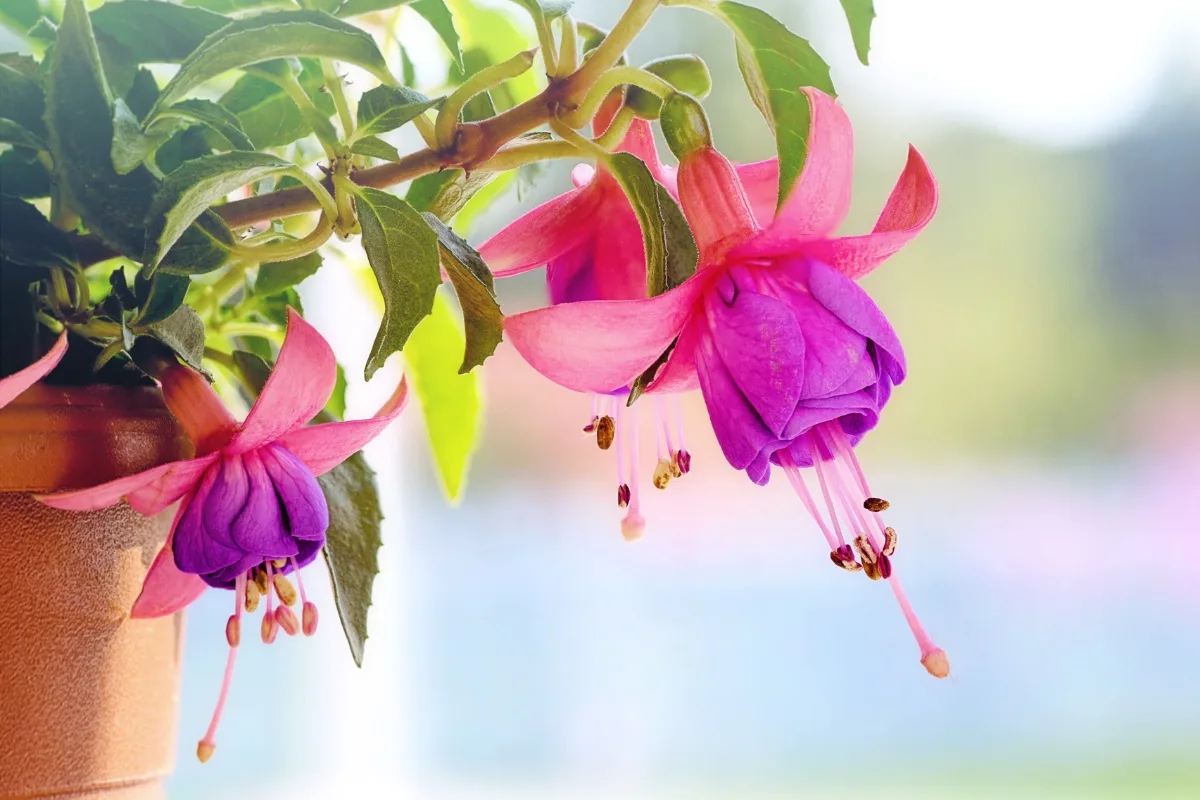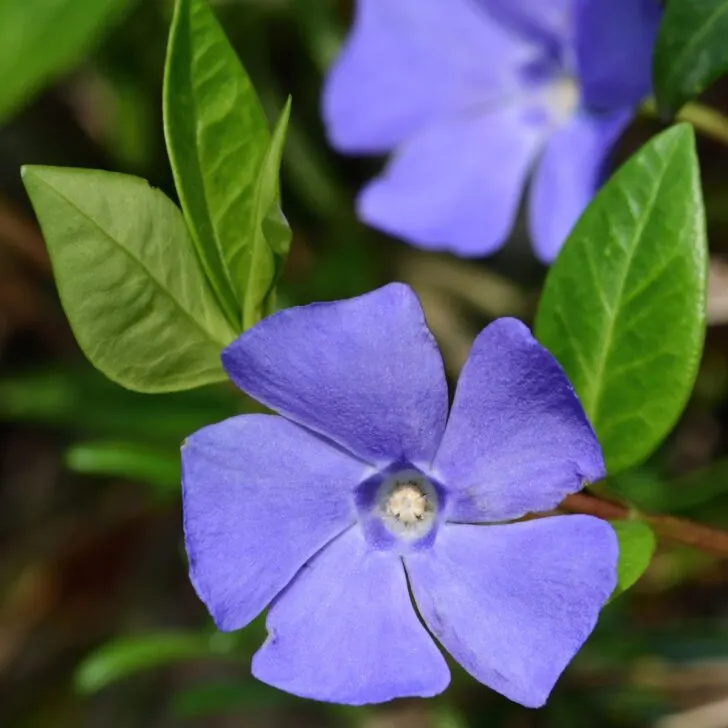The long-blooming flowers of fuchsia can attract hummingbirds to your shade garden all summer. Here's how to grow and care for fuchsia plants!

The whimsical flowers of fuchsias can bring a pop of color to the shady areas of your garden. You can plant it in the ground, in a container, in hanging baskets, or in a window box and attract hummingbirds and bees to come feed on the blooms all season.
Last summer, I placed a large container of fuchsia in the planter box on our front porch. We could watch through the screen door as Anna's hummingbirds constantly zipped from flower to flower, searching for nectar!

Fuchsias like fertile soil and plenty of water, but beyond that, they are generally trouble-free and easy to grow. While they don't withstand extremes of heat or cold, hardy fuchsia plants can tolerate light frost.
Here's how to grow and care for fuchsia in your garden!
This post contains affiliate links for your convenience. Purchases made through these links may earn me a small commission at no additional cost to you.
Varieties of Fuchsia
Fuchsias have about 100 species and several thousand cultivars, differing in size, flower color, and growth habits. Whatever your garden needs, there's sure to be a fuchsia that will work for you!

The most commonly grown species is 'Ladies' Eardrops,' or Fuchsia x hybrid. These cultivars have an upright growth habit that is more like a shrub. Trailing habit fuchsias are especially attractive in hanging baskets.
Many cultivars have different-colored sepals and corollas, but some have flowers of a more uniform color. Red and orange flowered fuchsias do better in the heat than cooler colors.
I planted this blue and white variety, called Delta's Sarah, in an area that gets gentle morning sun and protection from the hot afternoon heat. It's surrounded by shade loving heucheras with contrasting red foliage.

Is Fuchsia an Annual or Perennial?
Fuchsias can be treated as an annual or perennial, depending on where you live and what type of plant you have.
Hardy fuchsias are perennials in zones 6-10, although the lower range may need to provide some frost protection. Typically these types of fuchsia have woody stems and a more upright growing habit than the tender annual varieties.

In areas with colder winters, people often grow all fuchsias as an annual. If you can't bear to pull it out at the end of the season, you can keep the plants going by bringing them indoors in winter or moving them to a heated greenhouse.
When to Plant Fuchsias
The best time to plant fuchsias outside is in late spring and early summer when there is no chance of frost. However, you can plant them later in the summer if you give them plenty of water while the roots get established. Planting fuchsias in fall or winter risks damage from cold weather.

Where to Plant Fuchsias
Some varieties of fuchsia grow best in full shade, others like partial shade, and some prefer full sun, so be sure to select a cultivar to match the sun exposure of your growing location.
Varieties like this Firecracker fuchsia can thrive in both sun and shade, making them ideal for those tricky areas of the garden. I grew this beauty in a spot that gets lots of morning sun and afternoon shade, and it was constantly blooming!

Trailing fuchsias grow perfectly above a rock wall where their graceful, arching stems can cascade down the side. They're also ideal for containers and hanging baskets.
Fuchsias thrive when temperatures are between 60 and 70°F in the day and 50 to 60°F at night. When temperatures get above 75°F, fuchsias won't flower. If you live in a climate zone where temperatures fluctuate to extremes, it's best to grow fuchsias indoors as a houseplant.

When planting fuchsias outdoors, choose a site with fertile soil high in organic matter or amend the soil with compost or rotted manure before planting. If you grow fuchsias indoors, place the container near a window with bright but indirect light or on a porch where they don't get direct afternoon sun.
How to Grow Fuchsia from Seed or Cuttings
You can buy fuchsias as a potted plant at a garden center, but if you have the patience, you can grow them from seeds or softwood cuttings.

Sow seeds on top of a seed-starting mix and cover them lightly with soil. Keep the flat at an even temperature of around 70°F, and you should see them sprouting up in three to four weeks. Transplant into pots or outdoors after your last frost date when the seedlings are about six inches tall.
To propagate from cuttings:
- Snip off a 6 to 8-inch piece of a green stem in spring and remove a few leaves from the bottom end.
- Place the cutting into a moist potting mix of equal parts perlite and vermiculite up to the first set of leaves and water thoroughly.
- Cover the pot with transparent plastic, keep it moist, and set it in bright indirect sunlight.
In about three to four weeks, roots will grow, and you can transplant the seedlings into pots with well-draining potting soil mix or put them in the ground outside.
How to Care for Fuchsia Plants
Water
Water fuchsias regularly during the late spring and through the summer. Reduce watering in the fall to allow the plants to go dormant for winter. However, water the plants occasionally during dry weather in winter.

Temperature
If temperatures drop below freezing, it's best to bring tender fuchsia plants indoors or into a heated greenhouse. Hardy fuchsia can tolerate temperatures down to -5°F if planted in the ground.
Fertilizer
Fuchsias need regular fertilizing to grow and bloom. Use a balanced, water-soluble fertilizer every three to four weeks during spring and summer.
Pests
Whiteflies and aphids sometimes infest fuchsia plants. If aphids become a problem, you can control them with a jet of water, washing them off the plants. Pinch off foliage infested with whitefly larvae, put it in a sealed plastic bag, and throw it in the trash.
Pruning
Fuchsias flower on new growth, so you can prune out old stems and cut the plants back in the winter to keep them tidy.






